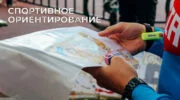In our article you will learn what is sports tourism, what types it is divided into, its characteristics, and what sports came out of sports tourism.
So, you have decided to systematize your knowledge in the field of tourism, or maybe you decided to take up tourism from scratch? Whatever the case may be, you need to understand and realize what is sports tourism? In tourist folklore, there is its own definition of tourism:
“Tourism is carrying heavy loads over long distances, at your own expense and in your spare time from your main job”
And it is impossible not to agree with this. In general, tourism is a very multifaceted concept. On the one hand, it is a kind of sport, we go hiking, fulfill the norms of sports categories, there is even Federation of sports tourism of Russia. On the other hand, tourism is a kind of rest, a way to have fun, to see other places, to learn and see something new, to experience something unknown. But, as a rule, without serious physical exertion.

In our article we will talk about the basics of sports tourism, that is, we will consider tourism, in the first place, as a sport, although the second component, too, no one cancels.
Sports tourism originated in Russia. The first public tourist organizations appear in our country in the middle of the 19th century. Subsequently, the movement is actively developing, there are new types of tourism, held competitions at the city, region, all over the country, and participants are assigned sports categories.
In Russia, the assignment of sports categories and titles is possible only for officially recognized sports. Sports tourism is not an exception, it was included in the All-Russian Registry of Sports in 1949, it was assigned a sport number 0840005411Я.
There are two groups of disciplines in sports tourism: routes and distances as well as the sport discipline of Nordic Walking. Within each group of disciplines there are separate disciplines associated with a particular type of tourism. For example, there are 10 such disciplines in the routes: walking, mountain walking, water skiing, spelunking, sailing, routes on means of transportation – horseback riding, bicycle and automobile, and combined routes.
The development of sports tourism as a sport is the responsibility of the Federation of Sports Tourism of Russia FSTR (formerly the Tourist-Sports Union of Russia TSSR). On the regional level, regional sports tourism federations are engaged in the development of sports tourism. Each federation has the so-called “species commissions” that are responsible for one or another discipline of tourism.
Types of sports tourism
We can travel in many different ways, and depending on the active way of traveling along the route or (in some cases) on the type of terrain where the trip takes place, there are different types of sports tourism.
What is the active way of travel? It is nothing other than the main way of movement of the tourist group on the route (on foot, on skis, on horseback, kayak, etc.).
The main and probably the most popular and widespread is hiking. In a hike tourists are moving on foot, carry in their backpacks all the equipment and products. I would like to draw attention to this point, no matter what kind of tourism you were planning to do, you will still have to go through the “hiking”.
All basic hiking skills are learned on hikes. Before you board a catamaran or kayak, ride a horse or motorcycle, climb a mountain or a cave, you must learn to navigate, pitch a tent, cook, provide first aid, and generally plan a route. And all these skills are obtained precisely in hiking.
But in order not to lose fitness in the winter, when you can not go hiking, most tourists are on skis. And this is ski tourism – tourists move along the route on skis, carry all the equipment and food in their backpacks.

And since hiking is carried out in the cold season, ski routes are complicated by low temperatures and additional dangers in the form of avalanches, snow storms, etc.
Having mastered the basics of tourism, you begin to try your hand at other types of tourism. Some people choose to do water tourism. In water camping tourists on the route moving on sports boats: kayaks, catamarans, rafting on rivers, overcoming various obstacles.
Some do not want to give up the charms of hiking, but hiking on the plains, forests and swamps bored them. They are beckoned by mountains. High, impregnable, snow-white peaks just call, forcing them to abandon everything and take up mountain tourism.
In the mountain hike tourists are on foot, as in hiking, carry all the equipment and food in their backpacks, but the mountain hikes are at high altitude – in the highlands. Routes are complicated by obstacles in the form of passes, peaks, the effects of cold and lack of oxygen at altitude.

In general, almost all tourists are romantics by nature. But in some of them the spirit of romance is so deeply rooted that it is not enough for them vast fields or unapproachable peaks. They dream of snow-white sails. But a sailing yacht is not a pleasure for the poor.
But even here, tourists have found a way out. They hike on collapsible inflatable sailing catamarans. And they dive into sailing tourism. The peculiarity of this type is the ability to operate a sailing vessel.
Some people, after reading Tom Sawyer as a child, dare to look into the bowels of the earth. There are a huge number of caves, abandoned mines and other underground labyrinths. And many tourists are attracted not by the snow-white peaks, but unexplored dark holes in the ground.
And they discover speleotourism, or in other words, “cave tourism”. Spelunking does not take place by land or water, but underground, in caves. Speleo-routes are complicated by obstacles in the form of steep chimneys, narrow crevices, pass in the dark in the light of lanterns.
But there is a category of people who are attracted to the vast expanses of the steppes. They live in the spirit of the explorers of antiquity, who went on their expeditions on horseback. For such lovers of freedom there is horseback tourism. Conducted both on flat terrain and in the mountains. The peculiarity of this type is the ability to control the horse.
Of course, to control the horse still need to learn, but each of us in childhood learned to ride a bike. And if you have not learned how to ride, and the vast expanses and speed beckon and call, people choose cycling tourism.

Bicycle tours can take place not only and not so much on roads, but also off-road, on mountains without trails. There are those who need more than one horsepower, they want more. And they go on off-road trips on motorcycles, quad bikes, snowmobiles and cars, discovering automotourism.
Automotopohodahod conducted mainly off-road, where you need special skills to manage the vehicle. But it happens to pass the entire intended route, not enough one vehicle. And then, after passing part of the route on foot, tourists are transplanted to the catamaran or kayak, or, after part of the route on the river on a catamaran, transplanted to the horses and go into the mountains.
In this case, you get a combined tourism – a type of tourism in which travelers use different active ways of traveling from different types of tourism. For example, walking-water trekking, horse-walking, horse-water trekking, etc.
Sports Tourism: Types of Sports
As mentioned above, hiking is a very versatile sport. Tourists are people who have a huge number of skills that can be useful to them not only in hiking, but also in everyday life. Many of these skills are quite specific. They require a person to have certain knowledge, skills, physical strength…
And, historically, at some point tourists appeared who decided to compete with each other in these skills. That’s how sports closely related to tourism, but being independent sports, appeared. Let’s briefly consider them.
The main skill a tourist needs is orienteering. But in addition to tourism in the world there is also an independent sport called “orienteering“. Competitions in this sport are held in nature, in the open countryside, the task of the athlete is to run the distance in the shortest possible time, navigating by map and compass.

Another sport that “grew out” of tourism is mountaineering. It is very similar to sports tourism, but unlike tourism, in mountaineering the task of athletes is not to pass some long route, but to climb a peak or several peaks.
For those who are important not to the result of conquering the top, but the process of climbing, there is such a sport as rock climbing. Here athletes compete in a high-speed ascent on the rock walls. Competitions can take place both on natural terrain and on artificial walls – rock climbing walls. Ice climbing is a kind of climbing – climbing on ice walls and icefalls.
Recently, rafting has become very popular. This sport is very similar to water tourism, but here the main means of rafting is a very large and durable inflatable raft boat, which is called a raft.

Among professional sports it is necessary to single out the sport of rescuers – a very rich and diverse sport, because rescuers are “universal soldiers” who must possess a large number of life skills, including hiking skills.
Hikes vary in difficulty, but then what does the difficulty of a hike depend on? All hikes, first of all, differ from each other in length and duration. Besides duration and extent on complexity of a campaign influence various obstacles which tourists have to overcome on a route. For example, in hiking, mountain and skiing tours, these are passes, peaks, river crossings.
Depending on the length of the hike and the set of obstacles, all hikes are divided into six categories of complexity. The easiest category is the first, the most difficult – the sixth. And can there be hikes simpler than the first category of complexity? Yes, they can. Such campaigns are called not category hikes.
And they also differ in complexity. Among non-category hikes there are three degrees of difficulty, the easiest one is the first one, and the most difficult one is the third one. And are there any hikes simpler than steppe ones? There are, and they are called weekend hikes.
How do hikes differ from each other in terms of difficulty? Each type of tourism has its own rules for categorizing the route, that is, the rules by which the complexity of the route is determined. An example for hiking: A weekend hike is a hike of no more than 30 km, lasting no more than 3 days (for this reason it is a weekend hike), without overcoming any difficult obstacles such as mountain passes or peaks.
And here in a foot campaign of the third category of complexity it is necessary to pass not less than 140 km for 8 days, and participants should be technically prepared – they should have under shoulders experience of a campaign of the second category of complexity. The head must have experience in the third level of a campaign, because they will need to overcome the pass 1B category of difficulty, and it assumes the ability to organize insurance on the rocks.
After the passage of the hike during the year the group submits reports on the passage of the route to the panel of judges. Reports indicate the schedule of the group, the route of the group, the layout of food for all the days, as well as supported by photo reports. Panel of judges at the end of the year summarizes and identifies the winners, assigning sports categories.









